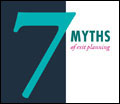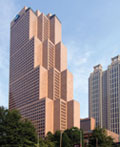NRCA has received several reports of corrosion of metal components with low-slope membrane roof systems containing specific fiberboard insulation products. Because this issue presents possible roof system performance and worker safety issues, you should be aware of circumstances that may pose safety concerns and ways to identify whether fiberboard insulation is problematic.
Reports of problems
NRCA contractor members in several U.S. regions have reported significant corrosion of roof assemblies' metal components that directly contact fiberboard insulation. The reports show two general problem-causing scenarios.
In one scenario, the fiberboard insulation had been used as a cover board that was mechanically attached in an insulated low-slope membrane roof system configuration. Significant corrosion of the metal mechanical fasteners and metal fastener plates used to attach the fiberboard cover board is reported.
In the other scenario, fiberboard insulation has been used as the primary insulation layer installed directly over steel roof decks. Significant corrosion of the steel roof deck portions that directly contact the fiberboard insulation—the tops of the deck ribs—is reported. This scenario is of particular concern because it can result in reduced load capacity of the roof deck and possible worker injury.
With each scenario, corrosion became evident three to seven years following installation.
NRCA has received problem reports from the South (Louisiana, Mississippi and Texas), Southeast (Florida, North Carolina and South Carolina) and New England; therefore, the problem does not appear to be limited to a specific U.S. region.
Analyzing the issue
NRCA's Technical Operations Committee met with fiberboard manufacturers; representatives of the North American Fiberboard Association (NAFA), a trade association representing fiberboard manufacturers; and several others regarding the corrosion concerns. The parties' consensus is the corrosion problem is attributed to bagasse fibers being incorporated into fiberboard insulation.
Bagasse is the fibrous byproduct material that remains after sugarcane or sorghum stalks are crushed to extract their juices. Bagasse sometimes is used in the manufacture of pulp and paper products and building materials. It also is used as a biofuel and cattle feed ingredient.
Bagasse-based fiberboard insulation is known to have been manufactured by Knight-Celotex LLC's Marrero, La., plant. Knight-Celotex produced fiberboard insulation in this plant from 2001 until about 2009. Reportedly, this is the only U.S. fiberboard plant producing bagasse-based fiberboard insulation during this time frame.
The U.S. product standard for fiberboard insulation, ASTM C208, "Standard Specification for Cellulosic Fiber Insulating Board," does not specifically exclude bagasse fibers from being used in wood fiberboard roof insulation. In fact, "… shall be manufactured from refined or partially refined ligno-cellulosic (wood or cane) fibers …" specifically is mentioned by ASTM C208.
As a result, users of wood fiberboard insulation currently have little assurance that potentially problematic bagasse fibers are not contained in wood fiberboard roof insulation.
NRCA recommendations
Because of the potential for corrosion to affect worker safety and the load-carrying capacity of steel roof decks, building owners, designers, product suppliers and roofing contractors are encouraged to review file information to determine whether fiberboard products have been used. Product suppliers can be queried and should be able to determine whether fiberboard products from Knight-Celotex's Marrero plant have been distributed in specific local regions.
Some fiberboard products manufactured by Knight-Celotex in Marrero may include product markings identifying it; however, NRCA is aware some of that plant's products do not include any identifying product markings.
Visually, bagasse-containing fiberboard insulation sometimes can be differentiated from wood fiberboard; bagasse-containing fiberboard generally is composed of coarser, irregular fibrous material.
Also, NRCA has asked NAFA, whose representative is chairman of the ASTM C208 task force, to appropriately revise ASTM C208 to specifically exclude bagasse from wood fiberboard roof insulation. To date, the task group has not taken action to address the issue even though two meetings and three ballot cycles have passed since NAFA committed to bring the issue forward.
Until ASTM C208 is appropriately revised, NRCA recommends designers exercise caution when specifying wood fiberboard insulation, particularly for low-slope membrane roof assemblies containing metal components.
Mark S. Graham is NRCA's associate executive director of technical services.



